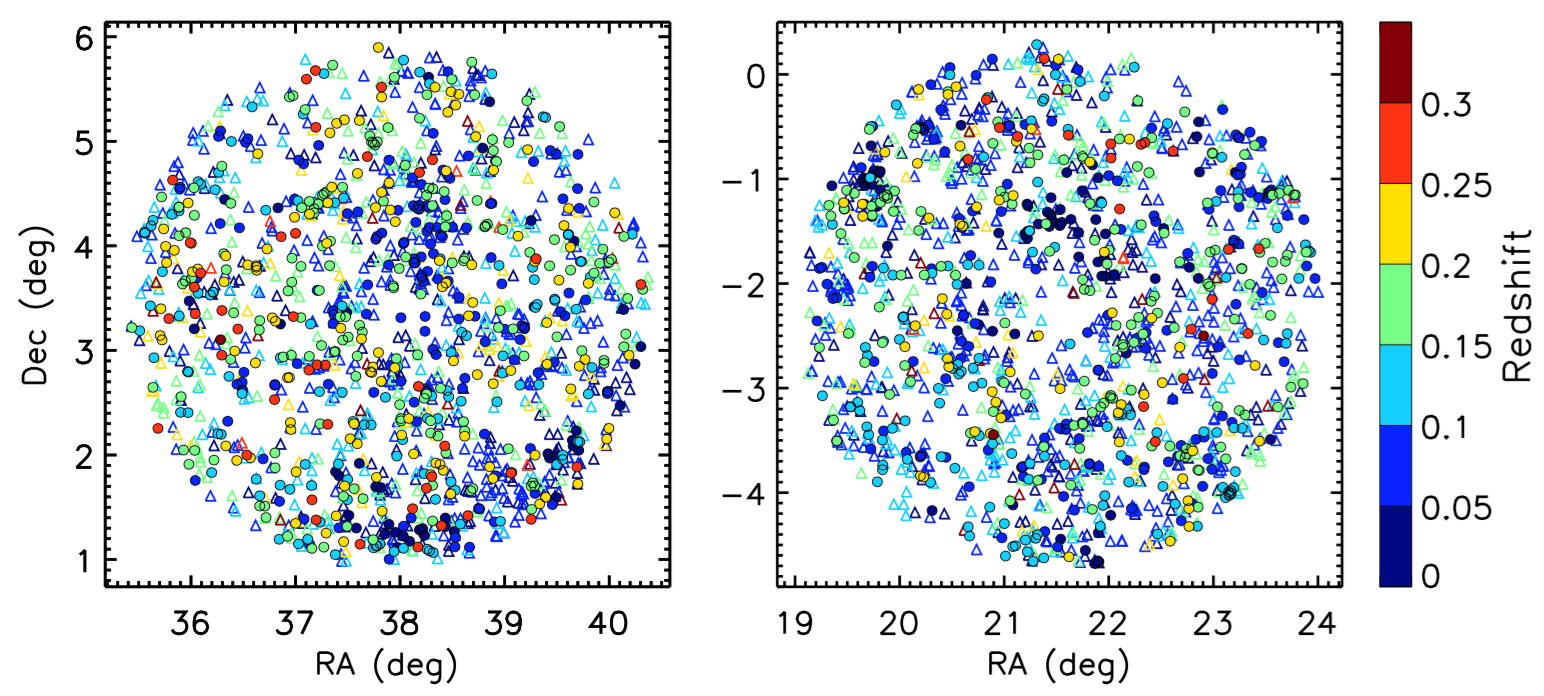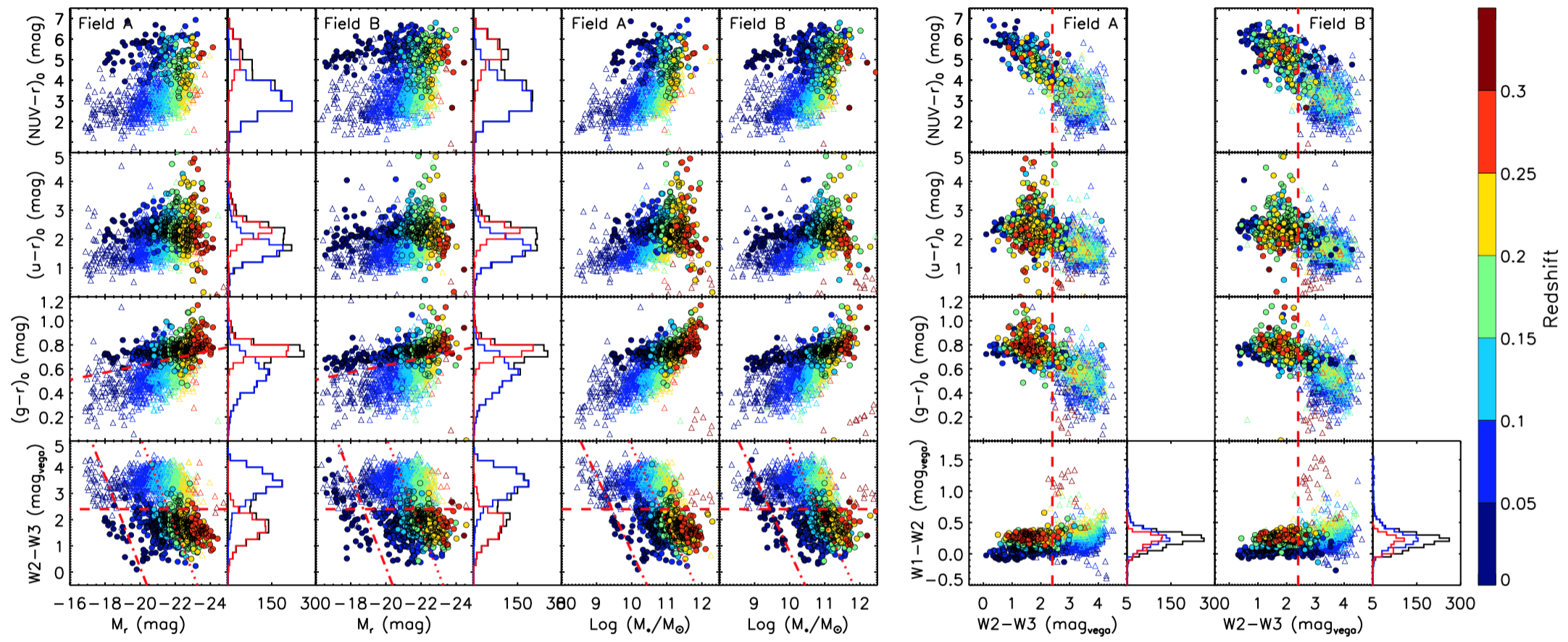You are here
A Spectroscopic Redshift Catalog of The LAMOST Complete Spectroscopic Survey of Pointing Area (LaCoSSPAr) in the Southern Galactic Cap
Recently, a team of scientists leading by Prof. Hong Wu in the National Astronomical Observatories, Chinese Academy of Sciences, and postdoctoral researcher Ming Yang in the National Observatory of Athens, Greece, has published a spectroscopic redshift catalog, based on the project of LAMOST Complete Spectroscopic Survey of Pointing Area (LaCoSSPAr) in the Southern Galactic Cap.
As an important part of the LAMOST scientific survey, the LAMOST ExtraGAlactic Survey (LEGAS) aims to take hundreds of thousands of spectra for extragalactic objects over 8000 deg2 of the Northern Galactic Cap (NGC) and 3500 deg2 of the Southern Galactic Cap (SGC) in five years, to study the galaxy evolution, AGNs/QSO, large-scale structure, dark matter/energy and so on. As part of the LEGAS, LaCoSSPAr is mainly focusing on the completeness of LEGAS in the SGC, the deficiencies of source selection methods, and the basic performance parameters of the LAMOST telescope. Meanwhile, in addition to the main scientific goals, some other topics can also be addressed by taking advantage of the large FOV and numerous fibers of LAMOST, as well as the repeating observational strategy of LaCoSSPAr, such as the physical properties of galaxies, identification and kinematic analysis of galaxy clusters, spectroscopic time-series analysis of variable sources (AGNs and variable stars; Cao et al. 2016), identification and analysis of luminous infrared galaxies, and infrared excess stars (Lam et al. 2015; Wu et al. 2016). The project has considerable scientific value since it is the most complete data set in LEGAS up to now.
LaCoSSPAr is designed to observe all sources (Galactic and extragalactic) by using a repeated observational strategy with a limiting magnitude of r = 18.1 mag (0.1 mag deeper than the LAMOST designed) in two 20 deg2 FOVs in the SGC. The observation has been conducted for about 14 months from 2012 September to 2014 January. In both fields, more than 95% of galaxies have been observed. A post-processing has been applied to the LAMOST 1D spectrum to remove the majority of remaining sky background residuals. In total, more than 3000 spectroscopic redshifts (absorption/emission line galaxies) have been identified by using visual inspection of combinations of different emission/absorption features with an uncertainty of Figure 1.![]() . Among the identified redshifts, 2/3 of them has never been observed before. The results show that it is possible to derive redshift from low S/N galaxies with the post-processing and visual inspection. Analysis also indicates that up to one-fourth of the input targets for a typical extragalactic spectroscopic survey might be unreliable. The improvement of the classification algorithm of the prior photometric survey could significantly improve the efficiency of the following spectroscopic survey. This may be important for the forthcoming large-scale spectroscopic surveys, like 4MOST, MOONS, WEAVE, DESI, PFS, MSE, and so on. The multi-wavelength data analysis shows that the majority of mid-infrared-detected absorption (91.3%) and emission line galaxies (93.3%) can be well separated by an empirical criterion of W2-W3=2.4. Meanwhile, a fainter sequence paralleled to the main population of galaxies has been witnessed both in Mr/W2-W3 and M*/W2-W3 diagrams, which could be the population of luminous dwarf galaxies but contaminated by the edge-on/highly inclined galaxies (~30%). The paper and spectroscopic redshift catalog have been published in the Astrophysical Journal Supplement Series (ApJS, 234, 5).
. Among the identified redshifts, 2/3 of them has never been observed before. The results show that it is possible to derive redshift from low S/N galaxies with the post-processing and visual inspection. Analysis also indicates that up to one-fourth of the input targets for a typical extragalactic spectroscopic survey might be unreliable. The improvement of the classification algorithm of the prior photometric survey could significantly improve the efficiency of the following spectroscopic survey. This may be important for the forthcoming large-scale spectroscopic surveys, like 4MOST, MOONS, WEAVE, DESI, PFS, MSE, and so on. The multi-wavelength data analysis shows that the majority of mid-infrared-detected absorption (91.3%) and emission line galaxies (93.3%) can be well separated by an empirical criterion of W2-W3=2.4. Meanwhile, a fainter sequence paralleled to the main population of galaxies has been witnessed both in Mr/W2-W3 and M*/W2-W3 diagrams, which could be the population of luminous dwarf galaxies but contaminated by the edge-on/highly inclined galaxies (~30%). The paper and spectroscopic redshift catalog have been published in the Astrophysical Journal Supplement Series (ApJS, 234, 5).

Figure 1: Spatial distribution of all absorption (solid circle) and emission line (open triangle) galaxies. Each galaxy has been color coded by redshift.

Figure 2: Color-magnitude diagrams in multi-wavelength data.
